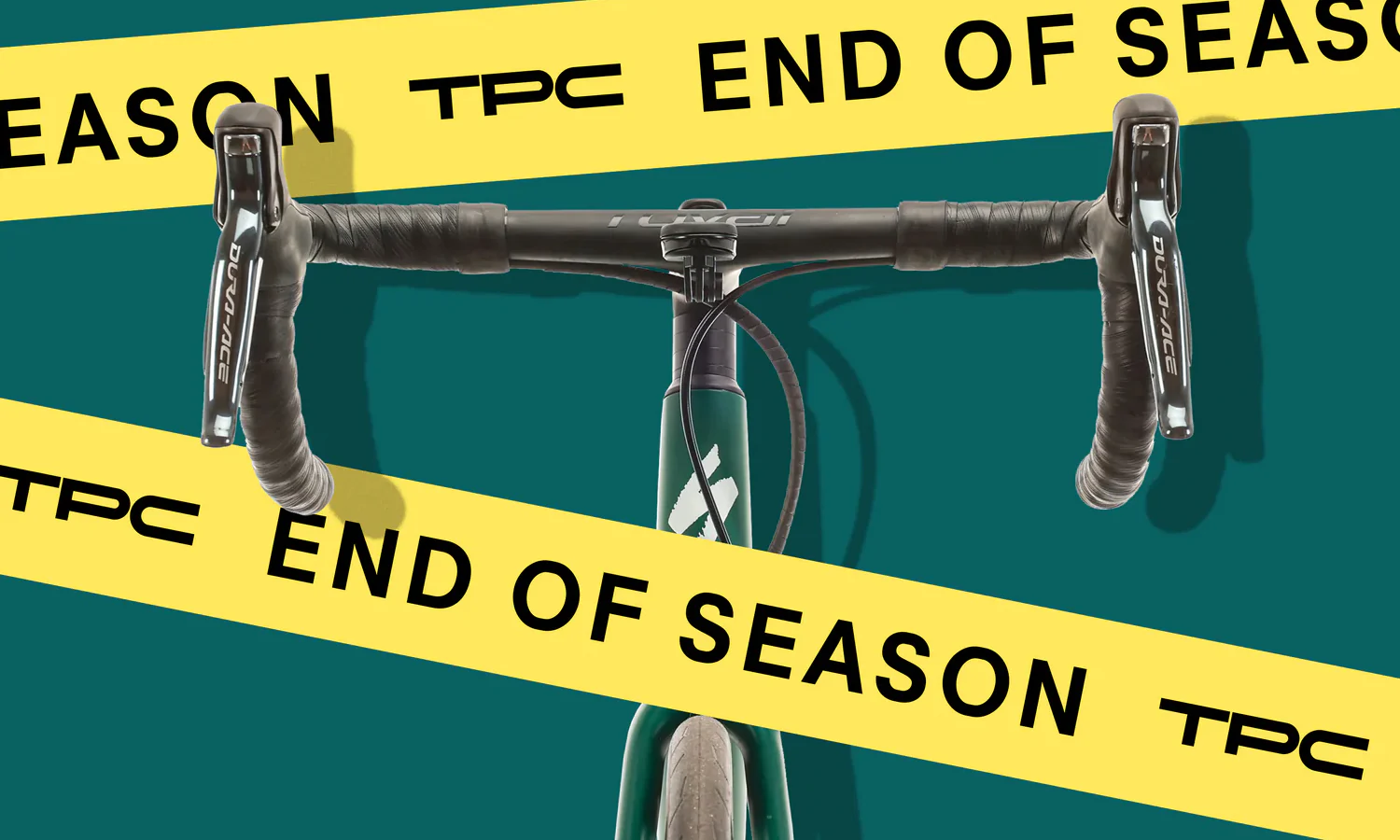 Of all points of contact on a mountain bike, the handlebars might be the most important. Not only do handlebars control the steering of the bike, they also have a huge impact on the overall fit of the bike and comfort of the ride. Here we’ll cover everything you need to know to choose the overall best handlebars for your mountain bike.
Of all points of contact on a mountain bike, the handlebars might be the most important. Not only do handlebars control the steering of the bike, they also have a huge impact on the overall fit of the bike and comfort of the ride. Here we’ll cover everything you need to know to choose the overall best handlebars for your mountain bike.
Handlebar material: The pros and cons
Mountain bike handlebars are almost always either aluminum alloy or carbon. On rare occasions, you’ll see titanium used as well. There are pros and cons to any material — here’s our breakdown:
Alloy
Pros:
- Extremely durable
- Inexpensive
- Less likely to have a catastrophic break — i.e. more likely to bend than break
Cons:
- Heavier than carbon
- Less vibration dampening
Carbon

Pros:
- Lightweight
- Better dampening vibration
- Great for climbing
Cons:
- Crashes can completely ruin the handlebars — more likely to crack or break than bend
- Pricey
Titanium

Pros:
- Extremely strong
- Lasts a long time
- Less vulnerable to bends and breaks
Cons:
- Expensive
- Not a wide variety to choose from
- Heavier
Handlebar shape: The rise and sweep

The rise and sweep are what give mountain bike handlebars their shape. The rise is the vertical measurement from the center of the bar to the end. Sweep is the bend of the handlebar and is usually thought of in terms of ‘up sweep’ and ‘back sweep.’ Up sweep is the angle measured as though there were a line drawn parallel to the clamping surface, and perpendicular from the rise. Back sweep can be thought of as the angle that the bars swoop toward the back of the bike. A typical up sweep is around 5-degrees, and a back sweep is between 7 and 10-degrees (these angles will vary depending on manufacturer).
Flat bars
When we think of flat bars, we think of XC-oriented bikes. While flat bars don’t have an up sweep, they do usually have a bit of a back sweep, for a more comfortable grip. This more race-oriented set-up keeps your hand and body position low and allows a rider to be in a more forward position, ready for driving the pedals hard on climbs and sprinting.
High rise bars
Again, riser bars rise upward on each side. The major advantages here have to do with comfort. Adjustments can be made on riser bars so that hands are in a higher position, thus taking weight off the hands and creating a more comfortable, neutral or upright position. This position is good for navigating steep and technical downhills. But, going too high and reducing weight on the hands too much can also mean less traction when cornering or going over obstacles.
Handlebar width: What to consider

Handlebar width has a lot to do with comfort — there’s no set rule or equation — it mainly comes down to feel. Obviously riders who are taller with wider shoulders will largely want wider handlebars. And smaller riders with narrower shoulders will feel more comfortable on narrower bars. But beyond that, choose handlebars that feel natural.
There are some tricks for determining the correct bar width like measuring your hand width in the pushup position or using a formula based on your height (world renowned coach Lee McCormack has suggested male riders multiply height in millimeters by 0.440 and female rider by 0.426 to find a good starting point for bar width), but the only way to really find your perfect width is through experimentation. Your shoulders, neck, back, and hands will tell you pretty quickly if your handlebars are the wrong width — they’ll cause discomfort, aches, and even numb spots.
You can always make wide bars narrower by cutting them with a hacksaw and guide, but you can't make a bar that's too narrow wider. It's often a good idea to buy wider handlebars and trim them down if necessary to fit. Here are a few things to think about when you’re choosing your ideal mountain bike handlebars:
Your height
Body proportions have a lot to do with picking handlebars that feel comfortable. Not just overall height, but also torso length and reach. Keep in mind that the difference in flat or riser bars can have an impact on reach — basically how far you have to reach with your arms to hold the handlebars. This also has an effect on bar height and stem height. A good rule of thumb is to have your grips be level with your saddle — no more than 30-50mm above, depending on your height and proportions. Level with the saddle is considered a more aggressive / racey orientation, while higher is more relaxed and oriented toward downhill.
Terrain and riding style
Terrain and riding style have a lot to do with handlebar preference. If you’re riding tight XC singletrack, wider handlebars might not be the best pick because they make it more difficult to carve tight corners around switchbacks or maneuver through narrow gaps in trees.
But if you’re more interested in blasting over obstacles, and flying down steep descents, something a little wider will likely feel more stable. Wider bars give you more leverage to keep the front wheel under control when going fast and taking on roots and rock gardens.
Generally, wider handlebars = more control going down, and narrower handlebars = more maneuverability around twisty singletrack.
Handlebar shape: Expanding options
Standard Straight Bar
Most mountain bikes still utilize the standard straight bar. There’s a huge range of options and tweaks that can be made to a traditional straight bar setup, so that you feel comfortable no matter your riding style, terrain, or body size.
Jones H-Bar

The Jones H-Bar originated in 2002, and has evolved to be a multi-position handlebar that offers a more comfortable ride for longer bikepacking and tour riding. They have 45-degrees of sweep, with several options for where to have your hands. Aero position, resting position, upright position. And there are places to mount anything you want for a longer trek.
Drop bars
Drop bar mountain bikes? Yes. These bikes have road bike characteristics, but are made for playing on the trails. These are becoming more and more popular for mixed terrain riding, touring, and bikepacking. Plus there’s just something super fun about riding drop bars down singletrack. Examples of drop bar mountain bikes: -Salsa Fargo -Trek 920 -Kona Sutra ULTD -REEB Sam’s Pants
22.2mm grip: The only choice
The only decision you don’t have to make is about the grip diameter: Mountain bike handlebars come in only one width — 22.2mm. So all grips are interchangeable with any mountain bike handlebars out there.
Stem clamp diameter: The new and the old

35mm stem clamp
More recently, an oversized 35mm clamp has become popular. It offers greater strength and stiffness. This diameter is also better for carbon bars because it provides a larger surface area for stem connection and thus lower clamping pressure. However, some find the larger diameter bars to ride a bit harsh
31.8mm stem clamp
This is the more classic option, and many can’t feel the difference in stiffness or flex, especially if they’re not a larger rider. That being said, 31.8mm bars are often more comfortable than oversized 35mm bars so if your hand feel sore on chattery terrain, a less stiff 31.8mm bar can help.
25.4mm
The old standard is 25.4mm. You might encounter it on some vintage bikes, but it's not seen on modern mountain or road bikes.
Conclusion
Handlebar choice largely comes down to style of riding, terrain, and comfort. Here are some take-away points to consider depending on the kind of riding you’re most often doing:
Cross Country Bikes: You want to look at lower rise handlebars and longer stems, for steep climbs. It also might be worth looking at carbon handlebars because of the weight factor. With long climbs, the lightweight handlebars really pay off.
Trail/Enduro Bikes: You have the largest variety to choose from. Carbon might be worth it here as well, if you’re spending long days on the bike. Choose anything from 10mm to 35mm rise, depending on your preference / comfort.
Downhill Bikes: You can look at either carbon or aluminum, though downhill bikes see the most abuse, so aluminum might be the safer, more economical choice. You’ll likely want to choose the highest rise bars, which help you get your weight back over the rear wheel.



























